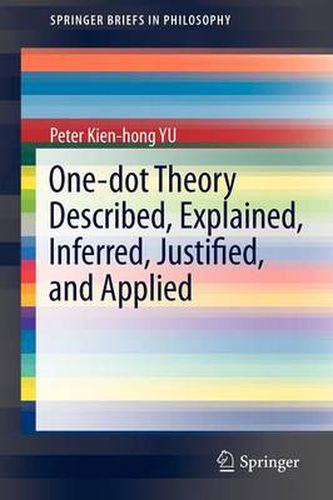Readings Newsletter
Become a Readings Member to make your shopping experience even easier.
Sign in or sign up for free!
You’re not far away from qualifying for FREE standard shipping within Australia
You’ve qualified for FREE standard shipping within Australia
The cart is loading…






This title is printed to order. This book may have been self-published. If so, we cannot guarantee the quality of the content. In the main most books will have gone through the editing process however some may not. We therefore suggest that you be aware of this before ordering this book. If in doubt check either the author or publisher’s details as we are unable to accept any returns unless they are faulty. Please contact us if you have any questions.
The ancient Chinese scholars are fond of applying the Yin and Yang diagram to correlate almost everything. This book continues that tradition and uses the model to study other non- dialectical theories and models. The major finding qua contribution in this publication is to point out that the four diagrams are equivalent to the BaGua or BaGuaTu (BG), a set of eight ancient China symbolic notations/gossip. Another finding is that dialectical/crab and frog motion remark is just the opposite of a non-dialectical/crab and frog motion (usually deductive, linear, or cause and effect) remark, or, at best, they must meet half-way.
The two major tasks of this book are to, first, apply the author’s one-dot theory, which is shored up by the crab and frog motion model, to convert other theories and models as well as studies and, second, apply his theory and model to reinvent some well-known western-derived theories and models and studies, such as game theory. The attempt is to narrow down the gap between the East and the West scholarship/XueShu, broadly defined, making the book of interest to Eastern and Western philosophers and scholars alike.
$9.00 standard shipping within Australia
FREE standard shipping within Australia for orders over $100.00
Express & International shipping calculated at checkout
This title is printed to order. This book may have been self-published. If so, we cannot guarantee the quality of the content. In the main most books will have gone through the editing process however some may not. We therefore suggest that you be aware of this before ordering this book. If in doubt check either the author or publisher’s details as we are unable to accept any returns unless they are faulty. Please contact us if you have any questions.
The ancient Chinese scholars are fond of applying the Yin and Yang diagram to correlate almost everything. This book continues that tradition and uses the model to study other non- dialectical theories and models. The major finding qua contribution in this publication is to point out that the four diagrams are equivalent to the BaGua or BaGuaTu (BG), a set of eight ancient China symbolic notations/gossip. Another finding is that dialectical/crab and frog motion remark is just the opposite of a non-dialectical/crab and frog motion (usually deductive, linear, or cause and effect) remark, or, at best, they must meet half-way.
The two major tasks of this book are to, first, apply the author’s one-dot theory, which is shored up by the crab and frog motion model, to convert other theories and models as well as studies and, second, apply his theory and model to reinvent some well-known western-derived theories and models and studies, such as game theory. The attempt is to narrow down the gap between the East and the West scholarship/XueShu, broadly defined, making the book of interest to Eastern and Western philosophers and scholars alike.